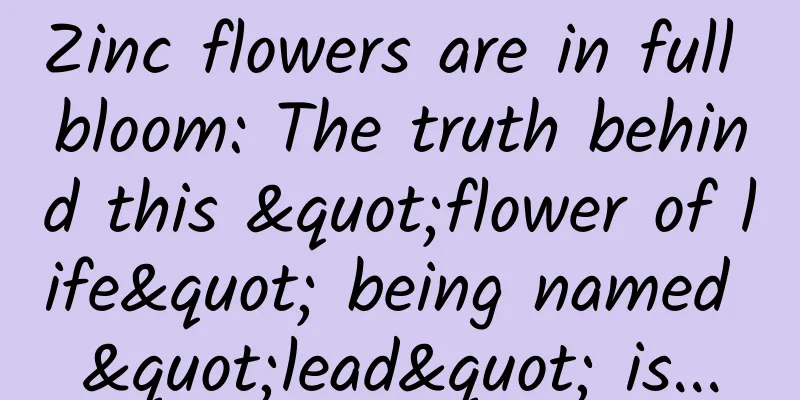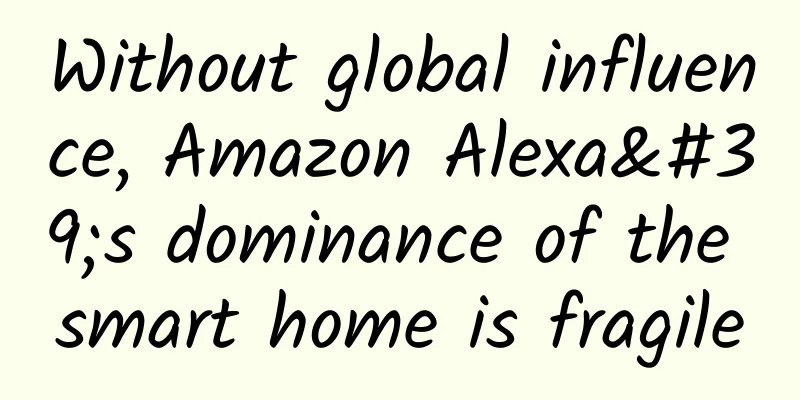Zinc flowers are in full bloom: The truth behind this "flower of life" being named "lead" is...

|
In junior high school chemistry, we have heard such a little knowledge that "pencils do not contain lead". They are called pencils even though they do not contain lead. This is because the main component of pencil core, graphite, is very similar to lead in shape, so it is mistaken for lead. In addition, before graphite was discovered and used, people used lead strips to write. In fact, there is another substance that is not lead, but was named lead in ancient times. It is zinc. Pencils do not contain lead (Picture from the Internet, please delete if infringed) Zinc is a common metal element. Common zinc-containing minerals include sphalerite, smithsonite, and zincite. In my country, zinc ores are often co-existing with lead ores, so this type of deposit is also called lead-zinc deposit, and its production areas are spread all over the country. Giant sphalerite specimen in the collection In ancient times, zinc was mainly used to make copper alloys, but humans started using it and obtaining its metal much later than iron, copper and lead. For example, before the Western Han Dynasty in my country, the main copper alloy was bronze. Bronze is made of pure copper, tin and lead as the main elements, according to a certain ratio. Zinc is sometimes present and sometimes not, and the content is sometimes high and sometimes low. This shows that it was not added intentionally, but mixed in as a symbiotic mineral component. Because lead, tin and zinc are all sulfur-philic elements, they often coexist with copper. Zinc is used to make copper alloys (Picture from the Internet, please delete if infringed) From the Western Han Dynasty to the Yuan Dynasty, zinc-containing minerals began to be intentionally used to make copper alloys: heating calamine (also known as smithsonite, which is zinc carbonate) can produce zinc oxide. Zinc oxide reacts with carbon to produce zinc and carbon dioxide. Zinc becomes the main element in the copper alloy. The resulting copper alloy looks like gold, so it is called brass. Brass utensils (Picture from the Internet, please delete if infringed) In the Ming Dynasty, people finally found a way to produce metallic zinc. Before that, since the boiling point of zinc was 906℃, when heated with charcoal, the temperature would quickly rise to over 1000℃, and the zinc would evaporate and become unobtainable. In the Ming Dynasty, Song Yingxing's "Heavenly Creations" recorded such a method: "Ten pounds of calamine per furnace are loaded into a clay pot, sealed with clay to gradually dry, and not to be cracked by fire. Then, coal cakes are placed layer by layer, and firewood is spread on the bottom. The calamine in the pot is melted into a ball, and the pot is destroyed after cooling to take it out. Two out of ten are consumed, which is Japanese lead." That is, calamine is put into a sealed clay pot and calcined. After cooling, the pot is broken to obtain metallic zinc. There is a loss of two pounds for every ten pounds, which is the same as the basic principle of modern pyrometallurgy of zinc. The Japanese lead mentioned in the book is metallic zinc. The Japanese lead recorded in "The Exploitation of the Works of Nature" is metallic zinc (the picture comes from the Internet, please delete if it infringes) Seeing the word "Wa" (Japanese), some people may think it comes from Japan. In fact, "The Exploitation of the Works of Nature" also explains this: "It is like lead and fierce, so it is called "Wayun". As for why "Wa" and "fierce" are related, there is a saying that it is because the Japanese pirates were very fierce along the coast. By the way, the name of zinc in Japanese is also related to lead, called "sub-lead". Zinc is called sub-lead in Japanese (picture from the Internet, please delete if infringed) Compared with lead, which is harmful to human health, zinc is one of the essential trace elements for the human body. It plays an important role in important physiological processes such as human growth and development, reproduction and inheritance, and is known as the "flower of life". In modern industry, metallic zinc has good rolling properties, wear resistance, corrosion resistance, castability and mechanical properties at room temperature, and can be made into alloys with excellent performance with a variety of metals. Therefore, it is used in the automotive, construction, home appliances, shipbuilding, light industry, machinery, battery and other industries in the form of galvanizing, zinc-based alloys, zinc oxide, etc., and its wide range of uses is second only to copper and aluminum among non-ferrous metals. One of the uses of zinc is to make batteries (picture from the Internet, please delete if infringement) However, excessive intake of zinc can be harmful to health, and the process of mining, smelting and discharge can also cause environmental damage to the soil, water and atmosphere. Therefore, although it is a bit cliché, the development and utilization of natural resources should be reasonable and moderate. |
<<: Can the front and rear tires of a car be swapped at will? | Car "rumor" crusher
Recommend
Adding propylene glycol, is toxic milk coming again?
Recently, the Market Supervision Bureau of Qingyu...
Unfortunately passed away! A woman with cancer did not go to the hospital for treatment, but... Many people are still unaware of these misunderstandings
Expert of this article: Hu Zhongdong, deputy chie...
Recommend two iOS magnetic download tools
When it comes to magnetic download tools, the fir...
Everyone is discussing the functions of mini programs, but I want to talk about a few promotion methods
People are chasing hot topics at an increasingly ...
Audiobook "Return to the Ming Dynasty to Become a Prince" All 750 episodes of audio collection
By accident, Zheng Shaopeng, the ninth generation ...
WeChat bans XiaoIce, Microsoft's mobile Internet surprise fails
[[127934]] On May 29, Microsoft launched its prod...
The latest list of closed communities in Shanghai due to the 2022 epidemic: Which specific communities need to be quarantined?
Recently, all local outbreaks in the country have...
What types of videos on Tik Tok are likely to go viral? What are the reasons why Douyin does not recommend it?
What types of videos on Tik Tok are likely to go ...
Military training encounters the "autumn heat", how to avoid the "test" of heat stroke? Collect the essential guide quickly!
Recently, the General Medicine Department of Yiya...
How do Huizhou merchants make profits through mini programs? How can individuals make profits by developing WeChat mini-programs?
WeChat mini programs are business opportunities i...
Have you avoided the 9 minefields of social marketing promotion?
Communities have always been controversial, espec...
About 3 million children are troubled by autism! Parents should be alert if their children have these conditions!
Author: Sheng Juan, deputy chief physician of Jin...
Pilots' anti-gravity suits were learned from giraffes?
Many people have had the experience of riding a r...
Foot bath and massage mini program function, how much does it cost to make a foot massage shop WeChat mini program?
Due to the impact of the epidemic, many companies...
One of the VIP online earning projects of Louge: Automatically earn money in one minute
Project Introduction: The products targeted by th...









